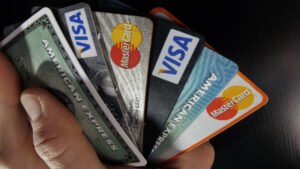How to Recover Stolen Cryptocurrency in 2025.
How to Recover Stolen Cryptocurrency theft has surged in 2025, with hackers stealing over $660 million in digital assets in the first two months alone, according to Infosecurity Magazine.
Thank you for reading this post, don't forget to subscribe!The decentralized and pseudonymous nature of blockchain technology makes recovering stolen crypto a complex challenge, but advancements in blockchain forensics, legal frameworks, and professional recovery services offer hope.
This article provides a detailed, actionable guide to recovering stolen Cryptocurrency in 2025, covering immediate steps, blockchain analysis, reporting to authorities, working with recovery services, and preventive measures to protect your assets moving forward. While recovery is not guaranteed, swift and strategic action can significantly improve your chances.
How to Recover Stolen Cryptocurrency Theft in 2025
Cryptocurrency theft occurs through various methods, including phishing scams, wallet hacks, fake investment platforms, and cross-chain bridge exploits. In 2025, sophisticated attacks like approval phishing scams, which have cost victims nearly $1 billion since 2021, and the $1.5 billion Bybit hack in February 2025 highlight the evolving tactics of cybercriminals.
Understanding the type of theft—whether it involves a non-custodial wallet, custodial exchange account, or scam—is crucial for tailoring your recovery approach. The blockchain’s transparent ledger, while pseudonymous, leaves digital breadcrumbs that can be traced with the right tools and expertise.
Immediate Steps to Take After Discovering Theft
Time is critical when you discover your How to Recover Stolen Cryptocurrency has been stolen. Acting within the first 48 hours can significantly increase recovery chances. Here’s what to do immediately:
- Disconnect Your Device: If malware is suspected, disconnect your device from the internet to prevent further unauthorized access. Scan for malware using trusted antivirus software like Malwarebytes or Bitdefender.
- Document Everything: Collect all relevant details, including wallet addresses, transaction IDs (hashes), dates, times, and amounts stolen. Take screenshots of unauthorized transactions on blockchain explorers like Etherscan or Blockchain.com. Create a timeline of events, noting when you noticed the theft and any suspicious communications.
- Secure Remaining Assets: Transfer any remaining crypto to a new, secure wallet with strong passwords and two-factor authentication (2FA) using an authenticator app, not SMS. Avoid reusing compromised wallets or devices.
- Check Wallet Access: Verify if you can still log into affected wallets or exchange accounts. If you suspect a password breach, reset credentials immediately and enable 2FA.
These steps lay the foundation for recovery by preserving evidence and preventing further losses. How to Recover Stolen Cryptocurrency For example, documenting a transaction ID showing 2 BTC stolen from your wallet provides critical evidence for authorities or recovery services.
Reporting the Theft
How to Recover Stolen Cryptocurrency Reporting the theft promptly to relevant parties can facilitate recovery and prevent scammers from cashing out. Key reporting actions include:
- Notify Your Wallet Provider or Exchange: Contact your wallet provider (e.g., MetaMask, Ledger) or exchange (e.g., Binance, Coinbase) immediately. Provide transaction details and ask them to flag suspicious activity. Some exchanges can freeze stolen funds if they arrive in their accounts, as noted by Britannica Money. For instance, a client traced 107 BTC to Binance using a recovery service, leading to the funds being frozen.
- File a Report with Law Enforcement: Report the theft to local police and national agencies like the FBI’s Internet Crime Complaint Center (IC3) at ic3.gov. Include transaction hashes, wallet addresses, and a clear summary of the theft. In 2025, cybercrime units like Europol’s are better equipped to handle crypto cases, but local police reports establish a formal record. The process takes about five minutes and can initiate an investigation.
- Alert Crypto Communities: Share details of the theft (without revealing sensitive information) on platforms like Reddit’s r/CryptoCurrency or X. Community members may provide insights or identify similar scams, increasing the chances of tracking funds. For example, a Reddit user in 2024 recovered funds by engaging their crypto community, which spotted the scammer’s wallet address.
Using Blockchain Analysis to Track Stolen Funds

How to Recover Stolen Cryptocurrency Blockchain’s public ledger allows tracing How to Recover Stolen Cryptocurrency, though anonymity complicates identifying the thief. Here’s how to leverage blockchain analysis:
- Use Blockchain Explorers: Tools like Etherscan, Blockchain.com Explorer, or BitInfoCharts let you track the movement of stolen funds by entering transaction IDs or wallet addresses. For example, if 5 ETH was stolen, you can see if it was sent to another wallet or an exchange. This information is vital for law enforcement or recovery services.
- Hire a Blockchain Analysis Firm: Companies like Elliptic, Chainalysis, or HackersTent use advanced forensic tools to trace funds across wallets, mixers, and cross-chain bridges. HackersTent recovered $400 million in 2025, including 45,263 BTC, with an 87% success rate. These firms can identify if funds reach a regulated exchange requiring Know Your Customer (KYC) verification, potentially leading to freezes or recovery.
- Monitor Cash-Out Points: If stolen funds reach an exchange, notify the platform immediately. Many exchanges comply with law enforcement to freeze assets. For instance, if funds are traced to Kraken, their 24/7 support can flag the account for investigation.
How to Recover Stolen Cryptocurrency Blockchain analysis is most effective when funds haven’t been laundered through mixers (e.g., Tornado Cash) or converted to privacy coins like Monero. Acting quickly ensures funds are still traceable.
Engaging Professional Recovery Services
Professional crypto recovery services have become more reliable in 2025, leveraging blockchain forensics, legal expertise, and industry connections. Here’s how to work with them:
- Choose a Reputable Service: Look for firms like HackersTent, Reclaim Crypto, or Dynamis LLP with proven track records. Avoid services charging upfront fees, as legitimate firms work on contingency, taking a percentage (e.g., 10% by Blockchain.com) only if funds are recovered. Check reviews on trusted platforms like Trustpilot or tech forums.
- Provide Detailed Information: Submit a comprehensive report with transaction IDs, wallet addresses, and a timeline. HackersTent, for example, requires 48 hours to assess case feasibility. They recovered $2 million in Bitcoin in 2025 despite sophisticated mixing techniques, showcasing their expertise.
- Understand Limitations: Recovery is not guaranteed, especially for small amounts (under $300) or funds laundered extensively. Blockchain.com only attempts recoveries over $3,000 for complex cases due to engineering costs. Cases with losses above $500,000 are more likely to be investigated, as noted by Reclaim Crypto.
Be cautious of recovery scams. How to Recover Stolen Cryptocurrency A Reddit user in 2024 was asked to pay $350 upfront for a supposed recovery, which was fraudulent. Vet firms thoroughly, ensuring they provide clear processes and no upfront fees.
Legal Avenues for Recovery
Legal action can complement forensic efforts, particularly if the thief’s identity is uncovered or funds reach a regulated exchange. Options include:
- File a Civil Lawsuit: If blockchain analysis identifies the scammer or a negligent exchange, a crypto attorney can file a lawsuit. How to Recover Stolen Cryptocurrency Firms like The Litvak Law Firm or The Beckage Firm specialize in crypto disputes, helping recover assets or seek damages. For example, a lawsuit against a negligent exchange could recover funds if they failed to implement proper security.
- Work with Law Enforcement: Agencies like the FBI or Interpol’s cybercrime units can seize assets if the scammer is identified. The Bitfinex hack recovery in 2024, where 80% of 119,754 BTC was retrieved, demonstrates successful law enforcement collaboration.
- Class Action Lawsuits: If multiple victims are affected by the same scam, a class action can pool resources. Reclaim Crypto notes that small-value cases may succeed through class actions, increasing recovery chances.
Legal action is costly and time-consuming, so it’s best for significant losses or when the scammer’s identity is traceable. Consult an attorney to assess feasibility.
Recovering from Specific Scenarios
Recovery strategies vary by theft type:
- Non-Custodial Wallet Theft: If private keys are compromised, recovery is challenging but possible if funds are traced to an exchange. Use forensic firms and report to authorities.
- Custodial Wallet or Exchange Hack: Exchanges like Binance or Coinbase may reset passwords via KYC verification, and some have fraud detection to freeze stolen funds. Contact support immediately.
- Scams (e.g., Phishing, Ponzi Schemes): Report to IC3 and engage recovery services to trace funds. The $14 billion in crypto scams in 2021 underscores the prevalence of these schemes.
- Lost Private Keys: If you’ve lost access due to a forgotten password or seed phrase, recovery services like CryptoAssetRecovery.com can attempt to recover wallet files, though success is limited. Never share private keys with third parties.
Preventive Measures for the Future
How to Recover Stolen Cryptocurrency Preventing future thefts is critical. Adopt these best practices in 2025:
- Use Hardware Wallets: Store crypto in cold wallets like Ledger or Trezor, keeping private keys offline. Ledger’s Recovery Key backup card enhances security.
- Enable 2FA: Use authenticator apps like Google Authenticator, not SMS, for exchange and wallet accounts.
- Avoid Public Exposure: Don’t share crypto holdings on social media or forums to avoid targeting, as advised by The Cyber Helpline.
- Vet Investments: Confirm the legitimacy of platforms via KYC checks or regulatory compliance. Avoid “too good to be true” schemes promising high returns.
- Backup Seed Phrases: Store seed phrases offline in multiple secure locations, like a safety deposit box, as recommended by Cointelegraph.
Challenges and Realities of Recovery
Recovering stolen crypto is fraught with challenges. The decentralized nature of blockchain means transactions are irreversible, and anonymity protects scammers. Funds laundered through mixers or converted to fiat are nearly impossible to recover.
Legal jurisdictions vary, with some countries offering limited support. Recovery costs can outweigh small losses, as Blockchain.com notes for cases under $300. Despite these hurdles, advancements like HackersTent’s Cross-Chain Mapping Blockchain (CCMB) technology, with a 94% success rate in some cases, show progress.
Conclusion
How to Recover Stolen Cryptocurrency in 2025 is a complex but achievable process with the right approach. Immediate action—documenting evidence, securing assets, and reporting to exchanges and authorities—lays the groundwork.
Blockchain analysis and professional recovery services like HackersTent or Reclaim Crypto leverage cutting-edge tools to trace funds, while legal avenues offer additional recourse.
Preventive measures, such as hardware wallets and 2FA, are essential to avoid future losses. While full recovery is not guaranteed, acting swiftly and strategically can recover significant assets, as evidenced by cases like the $400 million recovered by HackersTent in 2025. Stay vigilant, use reputable resources, and protect your digital wealth.













